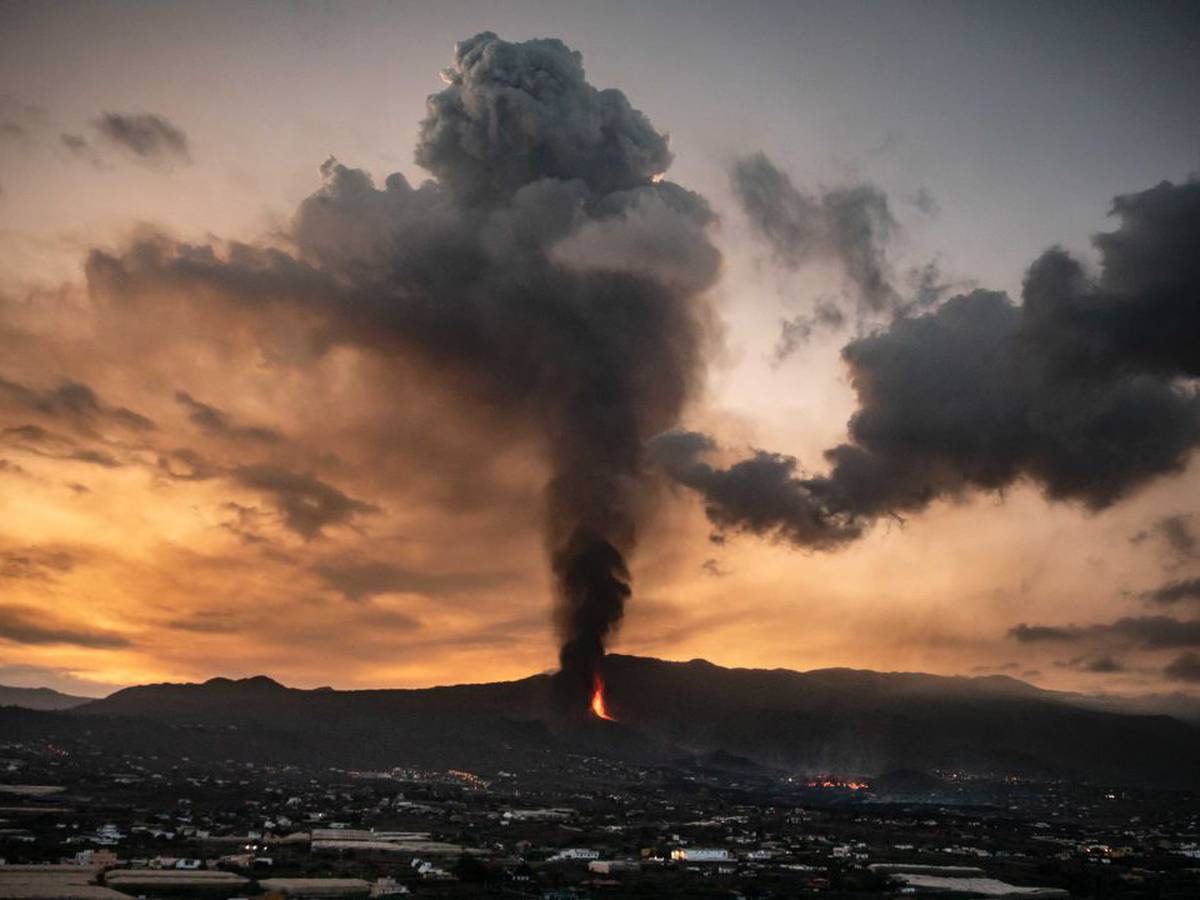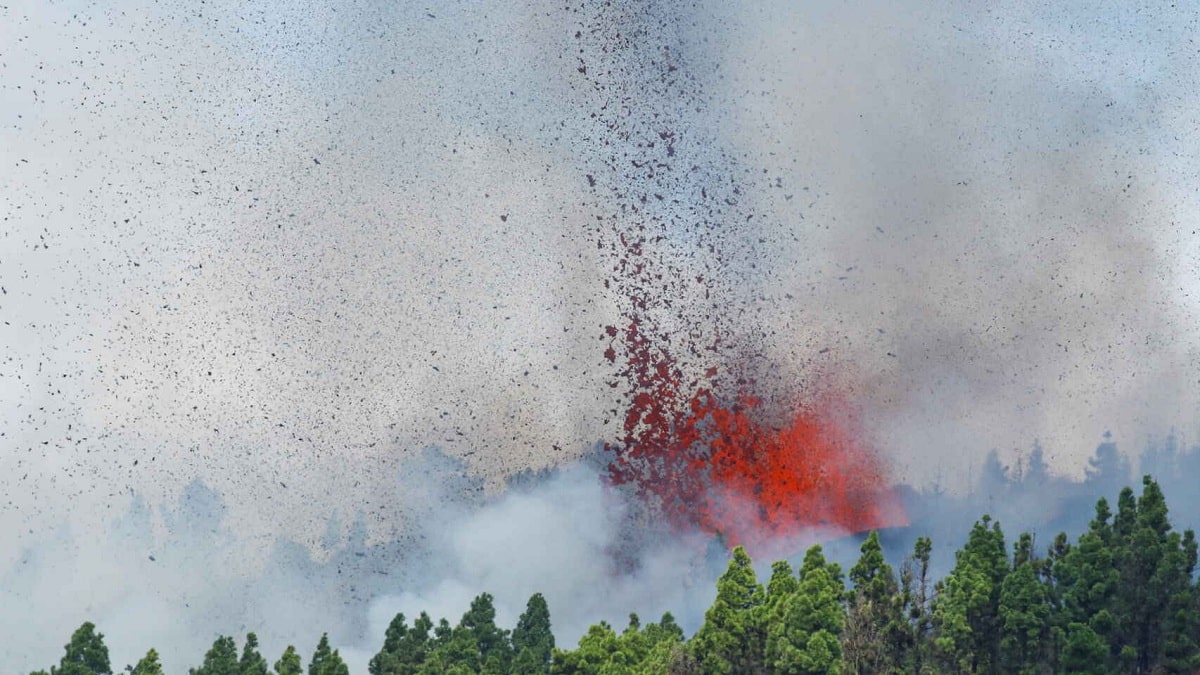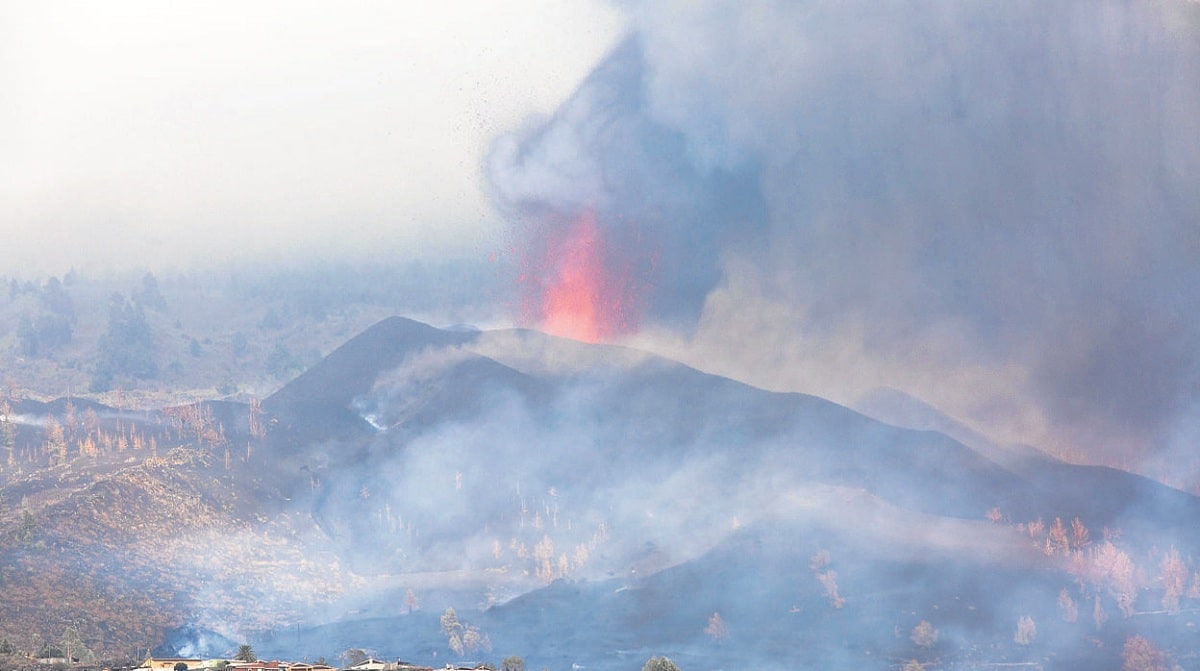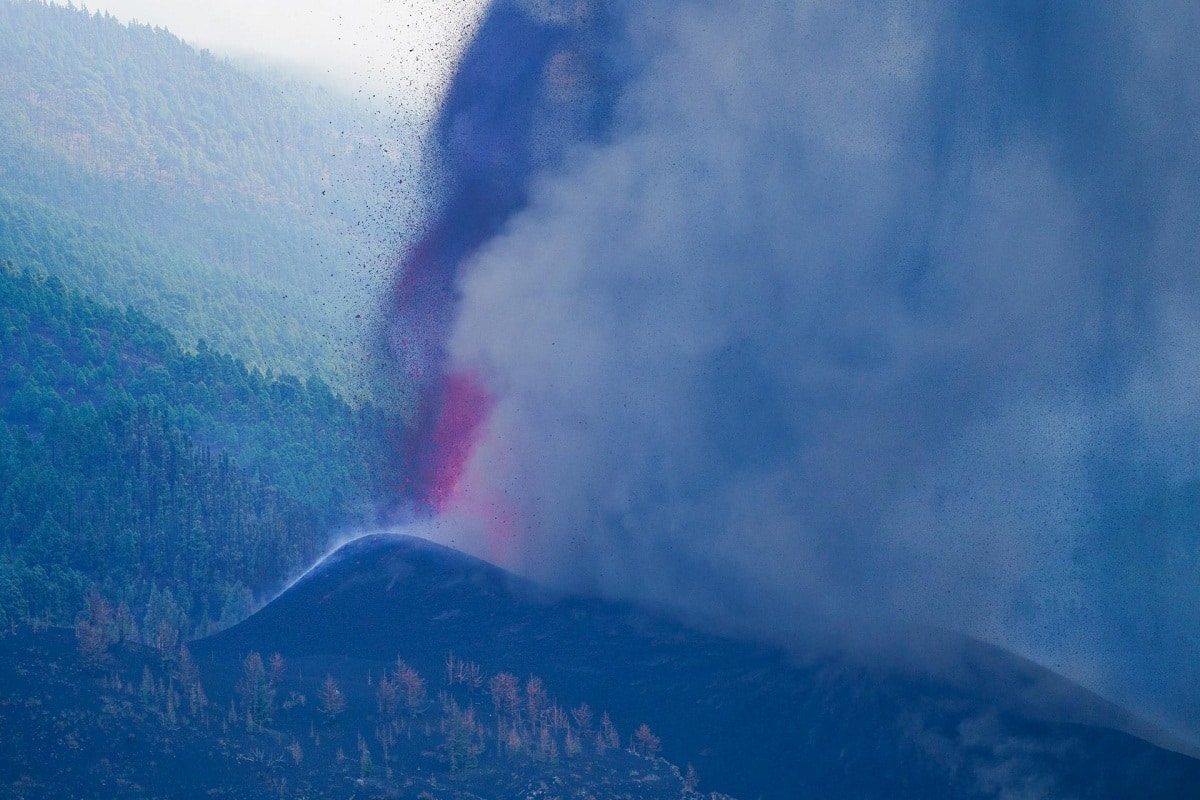
Among some of the serious consequences of air pollution is acid rain. This rain can be caused in different ways. One of them is the acid rain from a volcano. Volcanic eruptions release large amounts of harmful gases into the atmosphere that can trigger acid rain.
For this reason, we are going to dedicate this article to telling you everything you need to know about acid rain from a volcano, what the consequences are and how it is produced.
What is acid rain from a volcano

There are two types of acid rain, artificial (man-made) and naturally occurring, caused by volcanic gases.
anthropogenic acid rain It is basically produced by industrial development, the burning of fossil fuels or the burning of vegetation., which produces polluting gases that enter the atmosphere causing irreversible damage. When these polluting aerosols come into contact with atmospheric water vapor, they return as acid rain.
Acid rain from a volcano is produced when rainwater droplets dissolve intolerable sulfuric acid (H2SO4) and nitric acid (HNO3). Both acids are formed by the reaction of sulfur trioxide (SO3) and nitrogen dioxide (NO2) with water (H2O). As a result, the acidity of the water rainfall reaches a significant level of 3,5 to 5,5, relative to the normal pH of water of around 6,5.
Consequences of acid rain from a volcano

In people it can affect breathing, especially in children and the elderly with chronic lung disease. May cause coughing fits and choking; increased rates of chronic and acute asthma, acute bronchitis, and emphysema; changes in the defense system of the lungs, which they are exacerbated in people with cardiovascular and pulmonary diseases; eye and respiratory tract irritation, etc.
Effects of acid rain on soil and vegetation:
Increases the acidity of water in rivers and lakes, causing damage to aquatic life such as fish (river fish) and plants. It also increases the acidity of the soil, which translates into changes in its composition, produces leaching (washing) of important nutrients for plants, such as: calcium, nitrogen, phosphorus, etc., and mobilizes toxic metals such as cadmium, nickel, manganese, lead, mercury, chromium, etc. They are also introduced into water currents and food chains in this way.
Vegetation directly exposed to acid rain suffers not only the consequences of soil degradation, but also the direct damage, which can lead to fires.
What is the dynamics of acid rain?

Regardless of their origin, whether industrial or natural, the polluting gases that rise from the earth to the atmosphere, after a certain time and during the winter, can precipitate to form the so-called acid rain. Depending on the direction and speed of the winds, this will be the affected area where they are generated. Another term is dry sedimentation, where the contaminant settles without rain, that is, it settles under its own weight.
Acid rain is unavoidable as it is produced by technology that requires a human to survive. However, its impact can be mitigated by implementing appropriate techniques. To avoid damage to the respiratory system, nearby residents can put wet tissues on their noses and stay away from the scene in extreme cases, as prolonged exposure can lead to irreversible damage such as skin cancer.
Acid rain in the volcano of La Palma
The volcanic eruptions on La Palma involved the emission of gases such as water vapour, carbon dioxide or sulfur dioxide. The increase in the concentration of sulfur dioxide (SO2), the gas that produces acid rain when it rains, is significant.
The gas released by the eruption has also been found on many occasions as an atmospheric pollutant from industrial activity. Due to atmospheric transport, SO2 emissions can produce acid rain thousands of kilometers away. As a result, acid rain damages forests in countries other than where the polluting gas is emitted.
The highest concentrations of SO2 were found over the Canary Islands, which is logical. This made it likely that precipitation to the north and east of the island would experience large fluctuations, with the rain being more acidic than usual and the pH slightly lower. However, the release of SO2 was affected by volcanoes so the quality was considerably reduced. Atmospheric forecast models suggested that the gas was transported to the east and center of the peninsula, especially to the central and eastern part.
Despite all this, the rains in the Canary Islands were expected to be a little more acidic in the following days after the eruption but they did not turn out to have any health risk, nor that atmospheric concentrations of sulfur dioxide approached surface levels.
In these cases, the effects of the sulfur dioxide released by the volcanoes on surface meteorological conditions and air quality were minimal. In addition, on other occasions emissions of this gas have reached Spain due to volcanic eruptions on the other side of the Atlantic Ocean.
Consequences on the environment
We have seen that punctual acid rain does not present any risk to health or the environment. However, when this phenomenon becomes common, it has serious consequences. Let's see what they are:
- The oceans may lose biodiversity and productivity. A drop in the pH of seawater can damage phytoplankton, a food source for different organisms and animals that can alter the food chain and cause the extinction of different marine species.
- Inland waters are also acidifying at a very rapid rate, a particularly worrying fact if one takes into account that, although only 1% of the water on Earth is fresh, 40% of the fish live in it. Acidification increases the concentration of metal ions, primarily aluminum ions, which can kill most fish, amphibians, and aquatic plants in acidified lakes. Also, heavy metals move into groundwater, which is no longer fit for drinking.
- In forests, low soil pH and concentrations of metals such as aluminum prevent vegetation from properly absorbing the water and nutrients it needs. This damages the roots, slows growth, and makes the plant more fragile and vulnerable to disease and pests.
- Acid rain also affects art, history and cultural heritage. In addition to corroding the metallic elements of buildings and infrastructure, it can also damage the appearance of the monuments within them. The greatest damage occurs in calcareous structures, such as marble, which are gradually dissolved by the action of acid and water.
I hope that with this information you can learn more about acid rain from a volcano, how it is produced and what its consequences are.